What is cloud telephony, how does it work, and does your business need it?

Director of Content

Tags
Share
Does a traditional business phone system sufficiently meet your communication needs, or should you invest in cloud telephony?
It’s a big decision—and the pressure is on to make it. As we accelerate toward the landline phase-out in the UK, companies that have never considered cloud telephony before are having to decide what type of business phone system is right for them. The choice comes with a lot of questions.
How reliable, secure, and cost-effective is cloud-based telephony? How does it work? What benefits does it offer, and how do you make sure you’re choosing the right cloud telephony service?
Before we dive into these questions, let’s explore what cloud telephony actually means.
What is cloud telephony?
Cloud telephony refers to making phone calls over an internet connection—no more copper wires or restrictive desk phones—typically by using a cloud phone system.
Today though, many collaboration platforms don’t just offer cloud telephony and voice calls. Some also let you make video calls, share files, send instant messages, and communicate with your teammates and clients via SMS/MMS, all from a single application.
All you need to do is download the app onto your PC, Mac computer, or mobile device. For example, here’s how it looks on Dialpad’s app (you can even pick which caller ID you want to use):
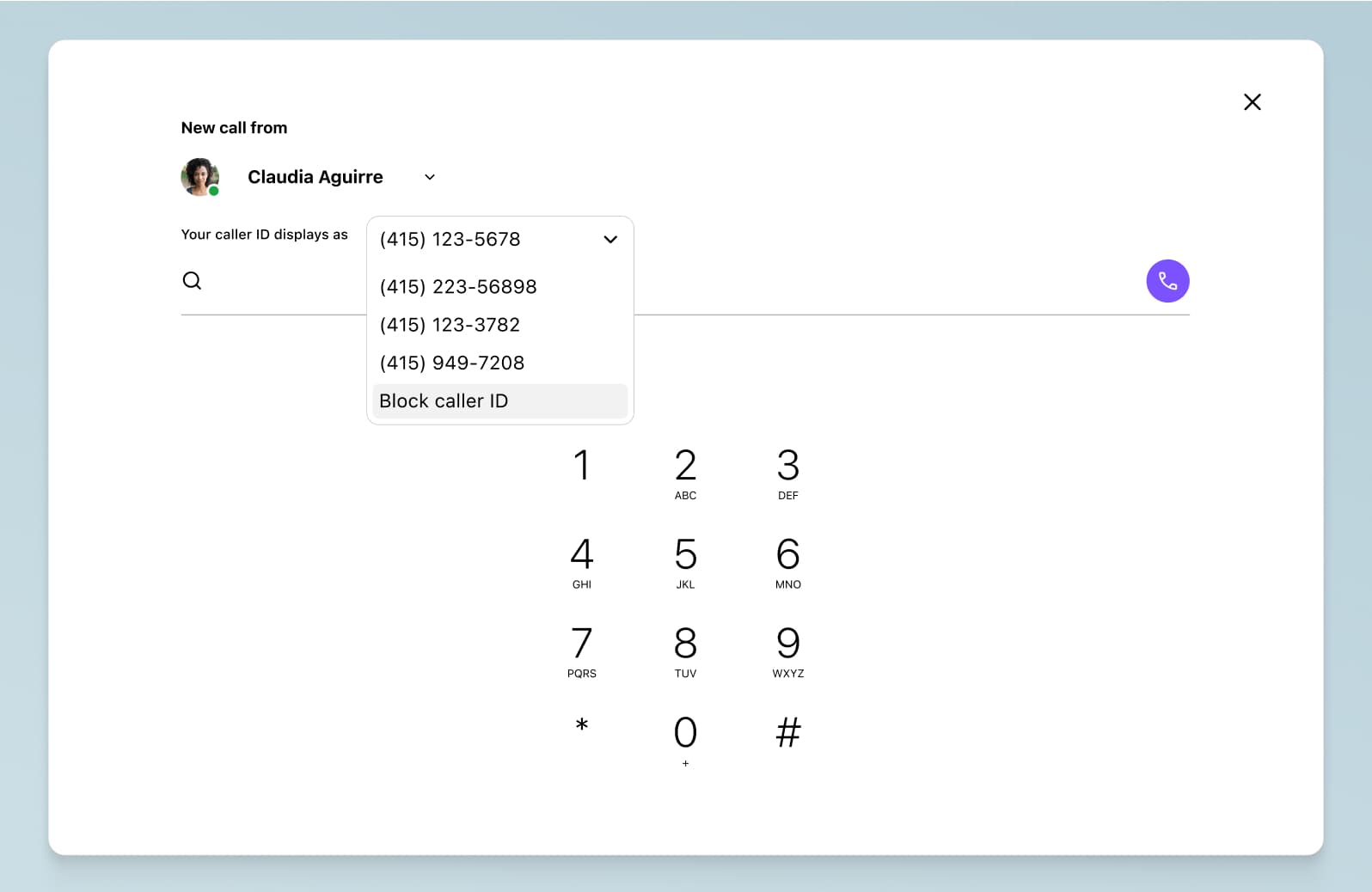
Some Ai-powered cloud phone systems also offer a range of more advanced features like real-time transcriptions, sentiment analysis, and call recording (more on these later).
With the landline phase-out and the rise of remote working, cloud telephony’s popularity has grown thanks to its flexibility and agility. And it’s all thanks to technology known as VoIP.
Cloud telephony vs. VoIP: Are they the same?
This is a common question, probably because “cloud telephony” and “VoIP” tend to be used interchangeably across the internet. However, they’re not the same thing.
Cloud telephony refers to the communication system through which cloud telephone calls are managed. VoIP (Voice over Internet Protocol) is what makes cloud telephony possible. It’s the fundamental technology that facilitates the transmission of calls over an internet connection.
So, without VoIP, we wouldn’t have cloud telephony at all.
How does cloud telephony work?
Unlike a traditional phone system, which uses copper wires to transmit voice signals over the Public Switched Telephone Network (PSTN), cloud telephony uses VoIP technology.
Here’s a basic rundown of how cloud telephony works: When you make a cloud call, analogue voice signals are converted into data packets and sent over the internet. Once they reach their destination, they’re converted back into analogue form.
This entire process is handled by your VoIP service provider, so you don’t need to have a technical or IT team dedicated to managing your cloud phone system.
What are the benefits of cloud telephony over traditional phone systems?
Aside from the fact that the UK—and other countries—is phasing out traditional landlines, there are other benefits of cloud-based telephony.
Ease of implementation and use
Traditional phone systems typically have significant infrastructure and hardware requirements. You may need to purchase and install PBX systems, servers, routers, wires, telephones—the list goes on. You also often need to hire technicians to complete the installation.
You may be looking at weeks of setup before you can even begin onboarding your employees.
But with the right cloud telephony provider, you can get set up in a matter of hours. The best cloud providers handle the implementation and configuration process—including number porting—so that you minimise downtime and maximise productivity.
The learning curve typically isn’t as steep either, if you’re using a well-designed, unified system with a clean interface.
For example, take a look at how easy it is to add a call forwarding number in Dialpad. All you need to do is navigate to your settings, add your number, and you’re finished:
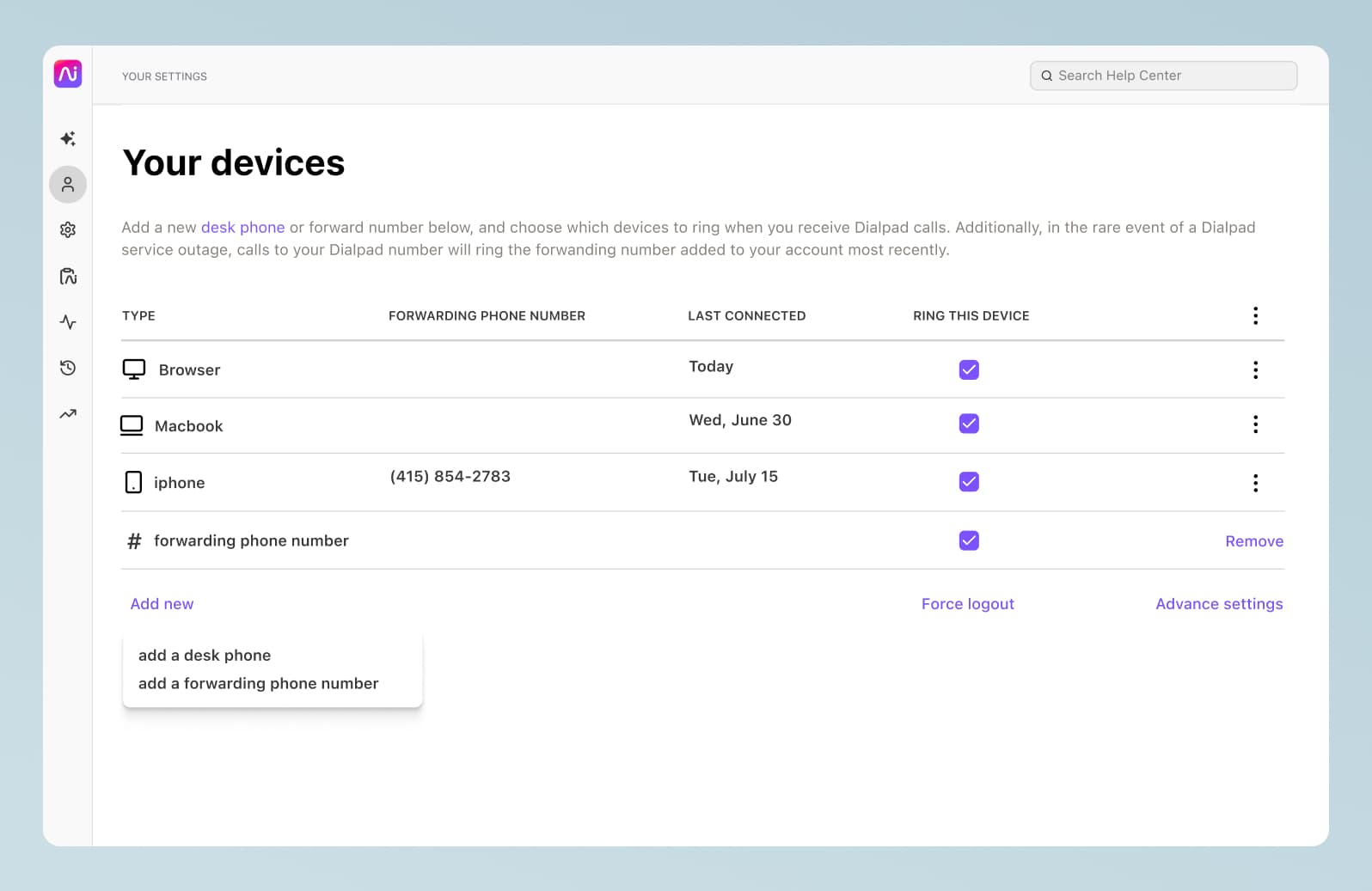
Flexibility and mobility
Remote working—whether it’s a couple of days a week or full-time—is also much easier with a cloud telephony system or collaboration platform.
To call clients or colleagues, all your employees need is an internet connection and a VoIP-enabled device. This means they can make and receive calls while they’re in their home office, on the train, in a coffee shop—pretty much anywhere they like.
For example, using Dialpad’s Ai-powered collaboration platform, employees can jump into video meetings, access their voicemails, manage their call routing rules, and more— from anywhere in the world, on virtually any internet-connected device. Laptop, smartphone, desk phone, tablet—it’s whatever works for them.
Essentially, remote and on-the-go workers can do everything your in-office workers do, making flexibility one of the most vital cloud telephony benefits for companies today.
Scalability
Cloud phone systems offer the kind of seamless, on-demand scalability that facilitates business growth and optimises costs.
Let’s say your call volumes skyrocket during a busy period and you need to add new phone lines fast. With a traditional phone system, you might need to manually wire new desk phones for every new seasonal employee. This is time-consuming and causes costly delays.
With a cloud telephony system on the other hand, you can add new users almost instantly and in just a few clicks. Once the busy period is over and your seasonal staff’s contracts have ended, simply remove the users from your dashboard and notify your cloud provider.
This is common in industries with high seasonality, such as travel and tourism, retail, education, and the like. A cloud telephony system will let you easily remove users and licences so you only pay for what you use.
👉 SIDE NOTE:
Many cloud providers also offer a certain amount of data storage. Dialpad offers call recording, for example, so you can store all your conversation recordings for customer intelligence insights as well as training and compliance. This is even available for Dialpad customers on the least expensive price plan—something that not all providers offer.
This is in stark contrast to an on-premises phone system. Once you’ve purchased and installed those extra phone lines and servers, you’re pretty much stuck with them (along with the costs of maintaining them).
👉 DIALPAD TIP:
Be sure to vet the flexibility, scalability, and user-friendliness of cloud providers before you commit to a pricing plan. Take advantage of free trials and demos, and check out customer stories and case studies to see if companies similar to yours also use this solution.
A greater range of features
A key advantage of using a cloud telephony provider is that your provider takes care of updating your software with the latest features and innovations (as long as you choose a reputable one, of course). This means you can enjoy the newest advanced features without having to lift a finger.
With Dialpad, for example, you get features like live transcriptions—Dialpad’s built-in Ai can transcribe calls as they’re happening, and even gauge the sentiment of the conversation.

This can help improve call handling by enabling supervisors to quickly attend to unhappy customers with helpful, personalised solutions.
Another useful feature Dialpad offers is real-time analytics. For example, you can view your call volumes, call abandonment rates, answer response rates, and other KPIs right from your online dashboard. You can also see IVR analytics to understand how callers interact with your IVR menu.

From advanced call routing to call recording, there are countless innovative features, and a good cloud telephony provider will also roll out new features regularly.
Ease of integration with other business tools
Cloud providers also typically offer native integrations with other cloud-based apps. Dialpad, for instance, provides CRM integrations with apps like Salesforce, Zoho CRM, Google Calendar, and more. You can also integrate it with productivity apps, workforce management tools, and other collaboration apps.
Let’s say your company receives lots of calls from customers with complicated issues. Integrating your cloud phone solution with your CRM lets your customer-facing team quickly see if a caller is an existing customer and their history with your company. This means your support and sales team can view the profiles and conversation histories of callers without having to toggle back and forth between different apps.
Dialpad’s Salesforce CRM integration, for instance, has automatic call logging capabilities and embeds a dialler right in the CRM:

Or maybe you collaborate with colleagues regularly through Google Workspace. By integrating this with a solution like Dialpad, you can connect Gmail, Google Docs, and Google Calendar to sync directory contacts, schedule Dialpad meetings in Google Calendar, and display shared documents and emails in Dialpad’s contact sidebar.
Cost efficiency
A cloud-based telephony system is usually more cost-efficient to set up and maintain than an on-premises system.
For one, it requires fewer upfront fees on things like hardware and installation. All you need is an internet connection and internet-connected devices. If you want to save even more money, your employees can use their own smartphones, laptops, and PCs.
All they have to do is download an app to turn their personal devices into softphones, giving them full business phone system capabilities.
Secondly, you don’t have to worry about maintenance costs because cloud service providers handle feature upgrades, security updates, and patches. Finally, cloud-based phone systems offer subscription-based models with detailed breakdowns of what’s included in each plan. This gives you a reliable bill every month and prevents you from getting caught out by hidden calling charges.
If you need more features, you can always upgrade your plan or purchase the feature you want as an add-on. If you need to downgrade or remove users (for example, seasonal staff), you can do so immediately to optimise costs.
Dialpad’s least expensive business communications plan begins at just £12 per user/month and offers unlimited calling.
How to tell if your business is ready for cloud telephony: 3 tell-tale signs
Of course, not all businesses necessarily need cloud telephony right away. So, how can you tell if your business needs cloud telephony? Here are a few signs.
Your phone service is just a phone service (and that’s not enough)
If all your employees need are basic, no-frills audio calls, then sure, a traditional phone system might be enough for you. But think about it for a moment: Are basic audio calls really enough to support your communication needs?
More than ever, the modern workplace relies on flexible, ad hoc communications. Employees may need to jump on a video call to discuss a project in more depth or send a quick SMS to a client.
The best cloud-based phone system not only facilitates these communication channels but also unifies these conversations into one platform to create a streamlined and efficient workflow.
With a traditional phone system, you just can’t get these communication channels, not to mention the advanced Ai features like real-time transcription.
Sentiment analysis, live transcription, and accessible call analytics are just some of the features that on-premises telephone users often miss out on. If you want to get your hands on these, it’s time to make the switch.
You’ve got a bloated communications tech stack
Despite their sometimes hefty price tags, traditional phone systems generally only offer voice calls. And besides being costly, it leads to other issues too.
One of the main ones? You end up with a bloated tech stack.
Take a look at your communication tools. As well as your phone system, are you also paying for a separate:
Team messaging application
Video conferencing solution
Business SMS app
Contact centre platform
If so, you’re probably spending a lot more money than you need to. What if your cloud-based phone system could do all of these things in a single pane of glass? Not only would you be paying less, you could also streamline your team’s workflows and help them save time by keeping all these conversations in the same app.
Take Dialpad’s collaboration platform, Dialpad Connect, for instance. It gives you voice calls, video calls, text messaging, and instant team messaging, within one intuitive interface.
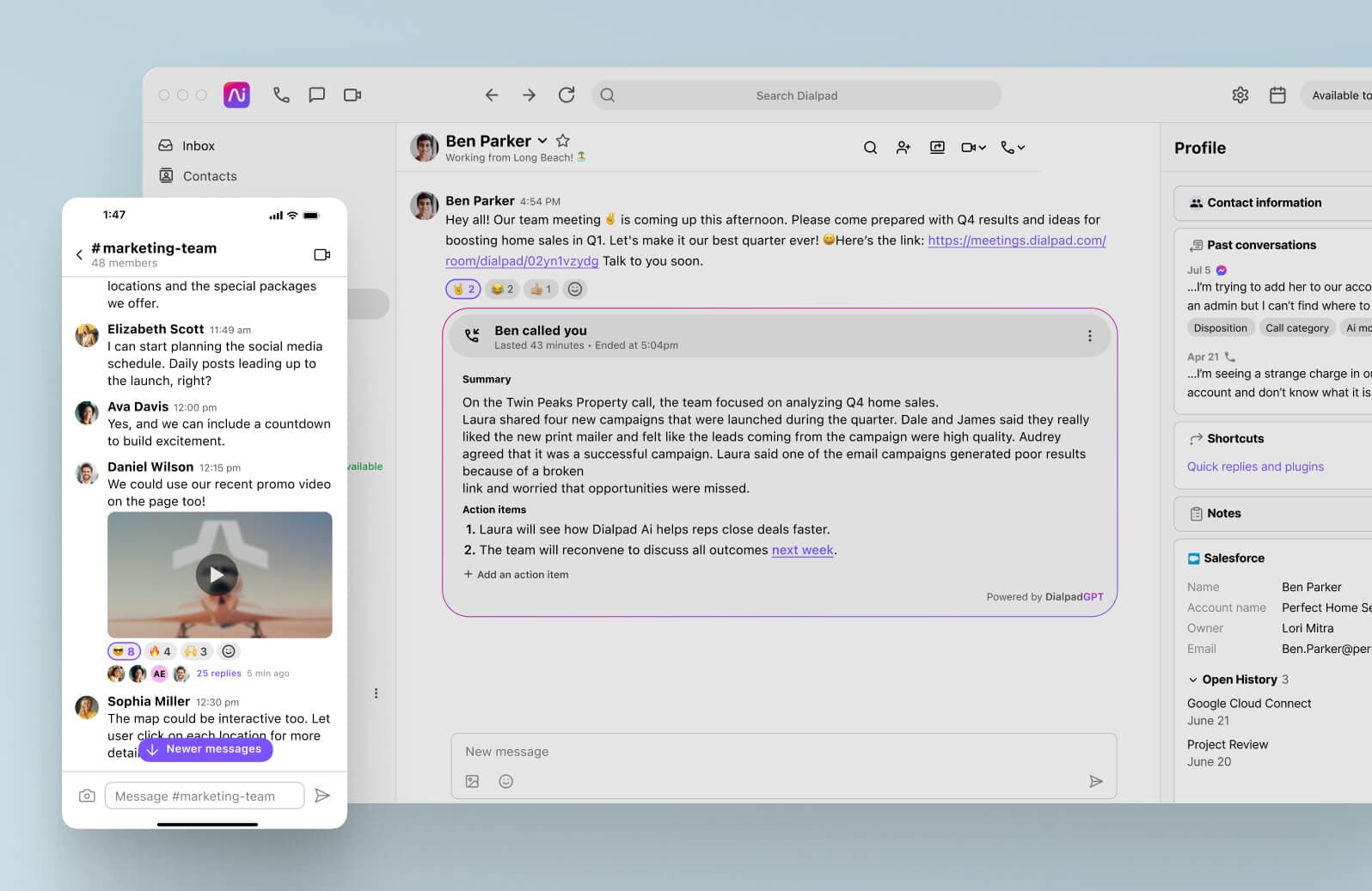
You need to accommodate distributed, hybrid, or remote teams
Remote working has lots of benefits. It improves employee flexibility, satisfaction, and productivity, which explains why 40% of the UK workforce work from home at least some of the time.
It’s good for your company, too. It removes geographical limitations, allowing you to hire the best global talent. But for remote, hybrid, or distributed working to be possible, you need cloud telephony.
Remote and distributed workers need to be able to communicate and collaborate as seamlessly as if they were in your office. Audio calls alone may not cut it here, ether—they need to be able to share and collaborate on files, attend video conferences, and message their colleagues.
Holistic collaboration solutions with built-in cloud phone systems make this possible.
Adding virtual numbers and extensions for new remote employees is easy too—Dialpad lets you do it right from your online dashboard:
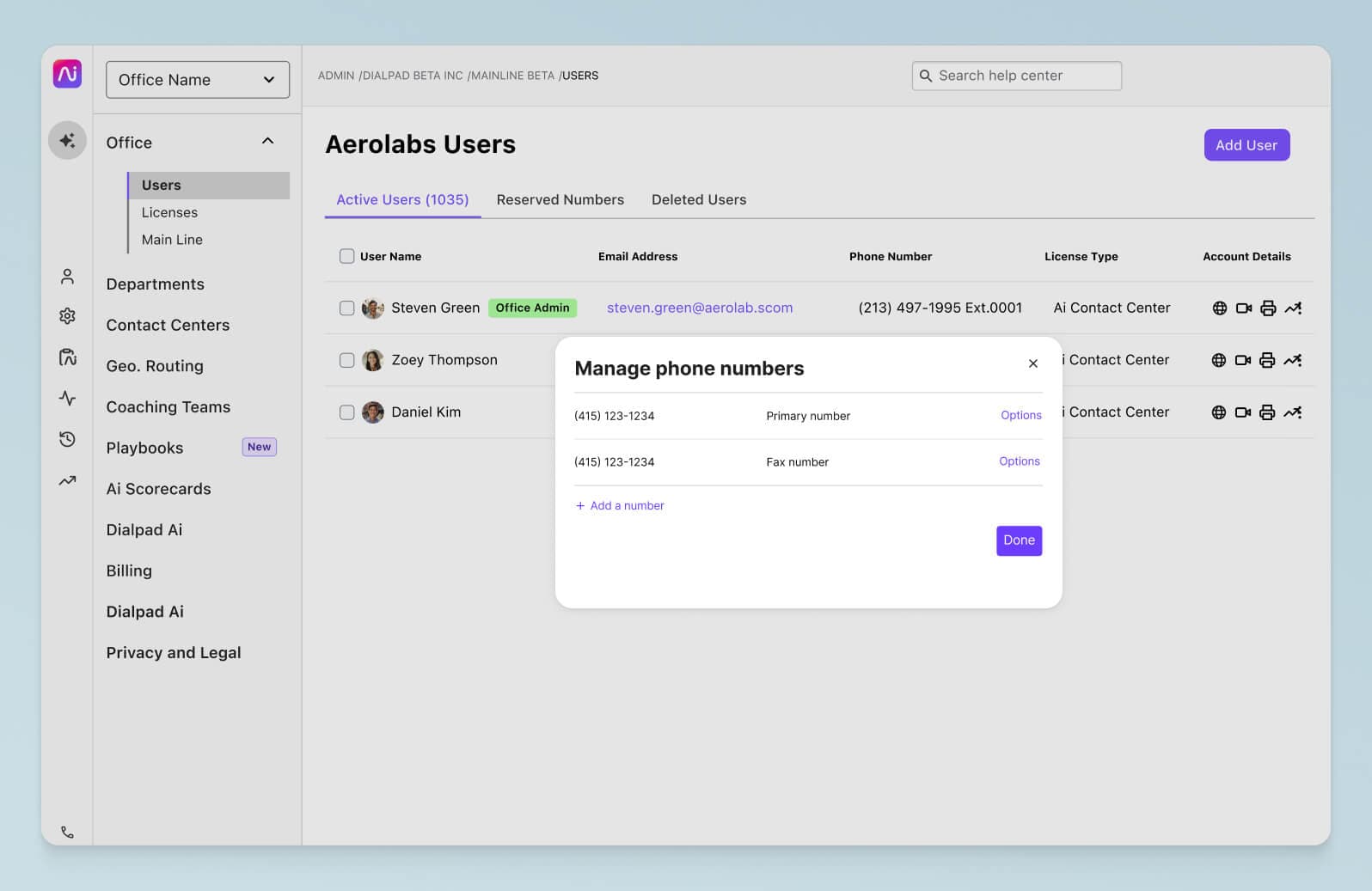
Choosing the best cloud telephony service: Questions to ask providers
If you’re sold on the benefits of cloud telephony, you may now be wondering which cloud telephony service provider is the best for your business. Here are some questions to consider asking:
What are the features of your platform?
No two cloud-based telephony solutions are created equal. Before you do anything else, look at the features offered by the platform and ask yourself if the solution is equipped with the features required to meet your specific business needs.
Compile a list of must-have and nice-to-have features to look for. Ask your team for any insights—they might come up with some essential features you haven’t thought of.
From there, begin examining the features offered by different cloud telephone service providers. Here are a few key features you want to look out for:
Call management. It might sound like a no-brainer but double-check that the solution comes equipped with essential call management functionalities like call listening, call barging, call park, and call transfer.
Call recording and real-time transcriptions. Does the cloud platform offer call recording and transcriptions? If so, how reliable and accurate are those features? For example, Dialpad’s native Ai can transcribe calls with unparalleled accuracy (and perform live sentiment analysis, provide assistance in real time with Ai Live Coach, and create call summaries, too).
Real-time call analytics. Can you view key business KPIs in real-time, such as your hourly call volumes, average answer times, number of abandoned calls, and more? Are these analytics readily available via an online dashboard, and how easy is this to interpret?
Integrations. Does the cloud phone solution integrate with the tools you’re currently using? The most important integrations to check are your CRMs, collaboration tools, and productivity apps.
Call routing. Intelligent call routing is a must-have. Evaluate whether the provider offers different types of routing, such as skills-based routing, least idle routing, and related features like IVR. Critically, evaluate how easy it is for admins to set up and modify these rules. With Dialpad, this can be done from the settings menu anytime you like.
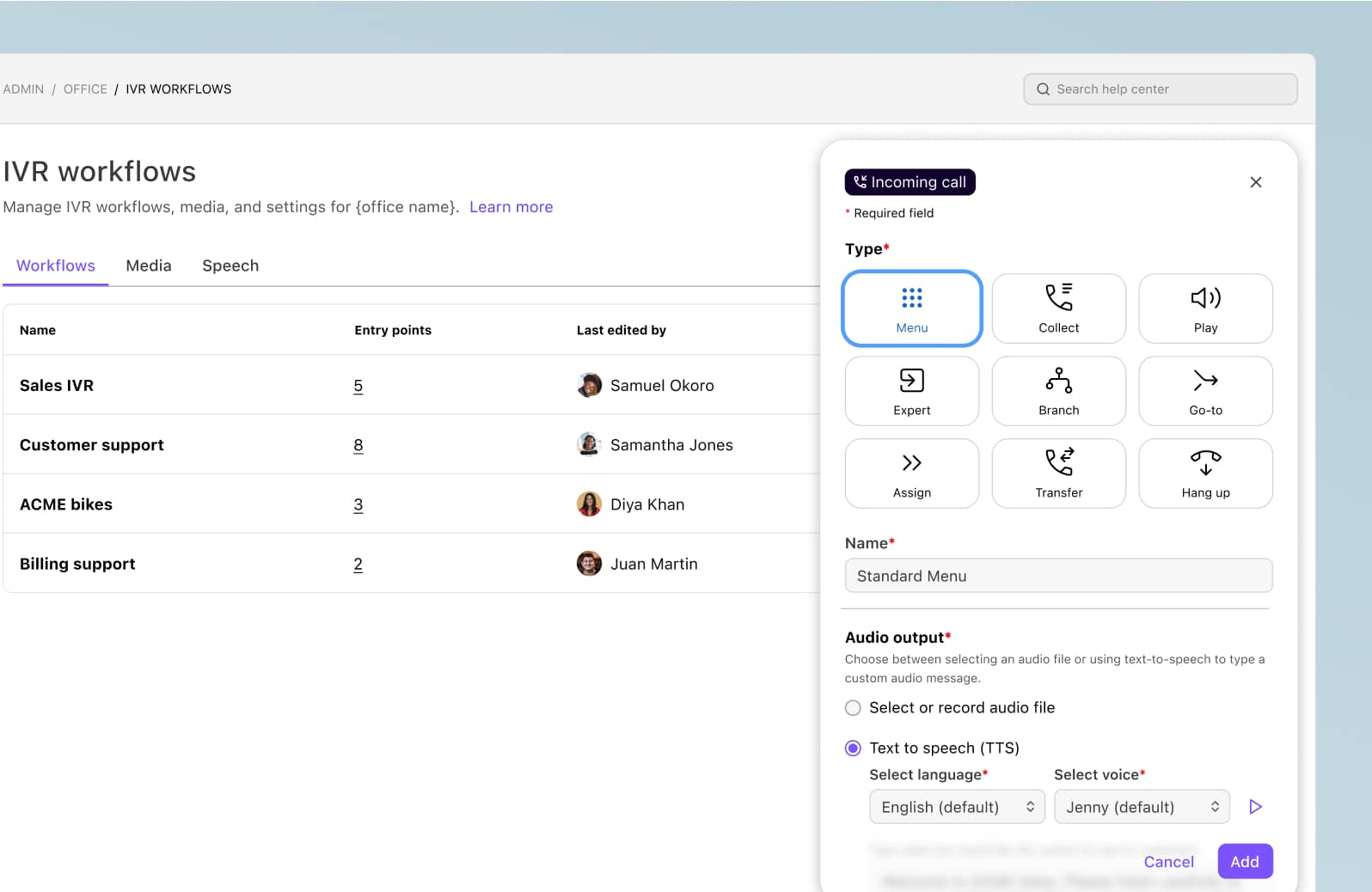
How reliable and secure is it?
At the end of the day, it doesn’t matter what features your cloud solution has if it isn’t reliable and secure. The main question for many companies is: are cloud telephony systems really as secure and reliable as on-premises ones?
Depending on your provider, the answer might be yes. In fact, many would argue that the cybersecurity measures implemented by security-first cloud providers make these solutions more secure than on-premises systems.
But again, no two solutions are created equal, which is why you need to do your research.
Reputable cloud telephony providers will have robust security measures in place to protect your business and customer communications.
For example, Dialpad protects your calls using enterprise-level encryption. In-transit data is encrypted using TLS, while at-rest data is stored on the Google Cloud Platform and encrypted with AES 256-bit. Plus, every live call made with Dialpad is encrypted and authenticated using WebRTC technology and Secure Real-Time Transport Protocol.
Then there’s compliance to consider. Is the solution GDPR compliant? Does it comply with industry-specific regulations, such as HIPAA? How about ISO and CSA?
While you’re looking into the security measures implemented by each provider, it’s worth reviewing their reliability, too. Your chosen provider should have multiple, globally distributed data centres so your call quality remains high even if one data centre goes down.
How easily will my team pick it up?
User-friendliness shouldn’t be an afterthought.
If your team struggles to use the software, you're going to suffer from low adoption, lost productivity, and poor time-to-value. Consider the tech-savviness of your team and opt for a solution with an aligned learning curve.
This is also one of the hardest things to gauge—you can’t just check off boxes based on cloud telephony providers’ marketing websites. Take advantage of the free trials and demos (a good cloud telephony provider should offer both) and let your team try out the platform and see first-hand how smooth and intuitive it actually is to use.
Assess how easy it is to perform basic call functions. Watch employees navigate the platform to review how easy it is to do everyday tasks. How streamlined is it for your employees to jump from calls to video chat to text message, for example?
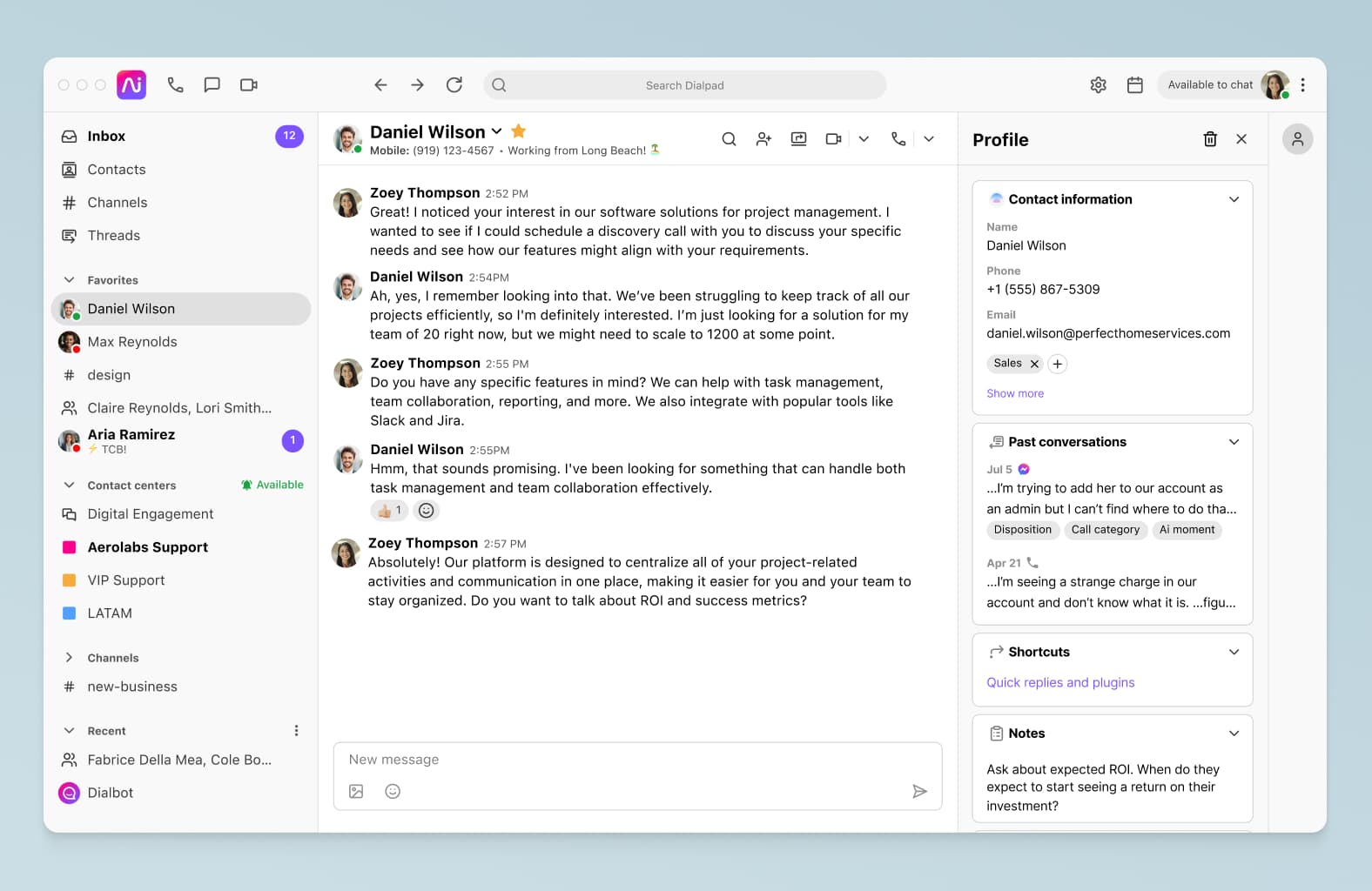
What support is provided during implementation and afterward?
The degree of customer support offered by your cloud provider can make all the difference.
Not all providers provide onboarding or support through the implementation process, so you’ll need to consider options in case you run into technical issues or need assistance using a specific feature.
Also, consider what channels you can go to for support.Not all providers offer customer support over the phone, so check whether your provider offers things like:
Live agent telephone support
Live chat support
FAQ pages and online how-to guides
Moderated forum support
Consider the availability too. Some providers will offer 24/7 support to assist you around the clock. Others operate on a 24/5 basis, and some will only provide support during 9-5 business hours in certain time zones.
What are the pricing plans?
Switching to the cloud is very likely to save you money. That said, it’s not as straightforward as simply picking the first—or cheapest—cloud telephony provider you find.
Cloud phone providers typically offer three or four pricing tiers. The higher the price tag, the more features you get, but the features offered in each tier can vary significantly between providers.
For example, one provider’s lowest-tiered plan might offer unlimited calling and real-time transcriptions (which is the case with Dialpad Connect). However, a different provider may not offer these features until their third or fourth tier—at which point, you’re paying a much higher price.
You’ll see this with a bunch of the features we’ve mentioned above (including customer support availability, uptime, etc.,) so it pays—or saves—to do some in-depth research.
Set a realistic budget and then compare relevant pricing plans across providers, taking extra care to evaluate the features they offer.
And don't forget to ask about free trials and product demos. This is important. If a package fits your requirements but is riddled with technical and usability issues, it isn’t going to deliver the same value as a slightly more expensive but higher-quality solution.
Is cloud telephony the future of your business communications?
If you’re looking to enrich your business communications with flexibility, mobility, and Ai-powered features, then cloud telephony may be for you.
Not only does cloud telephony allow employees to work from anywhere, it can also provide significant cost savings for businesses.
See how a good unified communications platform with built-in cloud telephony can empower your team with real-time analytics, call recording, real-time transcriptions, and more. Try Dialpad Connect today.
Looking for a cloud telephony provider?
Get more than just phone calls with Dialpad Connect. Try it out with a free trial, or take a self-guided interactive tour of the app first!







